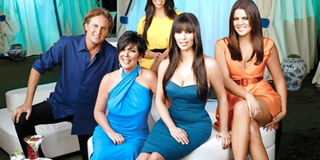Breaking News: KDF chopper crash kills five
There is need for influencers’ diversity

There are predictable patterns when it comes to selecting influencers. PHOTO | FILE | NATION MEDIA GROUP
What you need to know:
- A study revealed influencers do not just generate online sales, but offline sales too.
- There was yet another study that revealed celebrity bloggers are beginning to lose their appeal because the larger the following, the less the engagement, and marketers seek engagement.
When you think of an influencer, what is the picture that comes to mind?
It is likely a woman in her mid-20s to early 30s, very attractive, quiet stylish and with a large Instagram and Facebook following. Their feed is likely filled with a collection of pictures where she seems effortlessly happy and pretty, in beautiful locations and with warm, positive posts.
You probably also thought of the exact same list of names every marketing agency considers. There are really no surprises. You can anticipate who will be considered an influencer, sometimes right down to the brand likely to engage them.
You might think the rest of the world is different. Except if you follow the hashtag #revolvesowhite, you will realise they also have the same type of influencers listed. It would seem the entire world is experiencing a lack of diversity when it comes to influencers.
There are predictable patterns when it comes to selecting them, and more and more, marketing agencies are coming under fire for lacking imagination when it comes to listing their possible and active influencers.
WHY DOES IT MATTER?
There might be the thought, why would influencers even matter? In 2016, a US company discovered the ROI — return on investment — thanks to influencers, hit 970%. Of course this depends on the industry with electronics not having much luck. A separate study also revealed influencers do not just generate online sales, but offline sales too.
There was yet another study that revealed celebrity bloggers are beginning to lose their appeal because the larger the following, the less the engagement, and marketers seek engagement. This has led to the rise of what is called real people who have a smaller following. Called micro influencers, these people are trusted by their audience as experts, and as influencers because their recommendations are genuine and authentic, and will not be done for money, but for engagement and impact. Internationally, it means using a series of influencers rather than one big influencer.
This is the entry point for the conversation about diversity of influencers. Brands are getting called out for not having more minorities and variety in body types, shapes and sizes as part of their campaigns and instead reaching for the universally safer choice. Forbes made a prediction in April this year about influencers, starting with the possibility of more diversity ranging from those with 100,000+ followers, who are the elite, to newcomers. It will all add up to audiences expecting authenticity from influencers.
CO-CREATION
Co-creation will have to be genuine, sincere and accurate, or it erodes the trust the brand has developed with its consumers, not to mention the backlash against the influencer perceived as faking it. With the influencer game growing strong, there are now more people whose specific career goal in life is to become influencers. They curate social media accounts to gain followers so they can be paid to influence.
In the process, the experts and charlatans will be separated. But it makes competition very fierce. Just think about it. How many fashion turned lifestyle bloggers are out in the field right now, and how many self-acclaimed stylists are in the picture?
All this leads to greater demands by brands. Understanding and leveraging social media platforms, maximising them to your advantage, makes it easy for an influencer to access analytics. With so many influencers afoot, agencies will want to check out how you are engaging with your followers.
The one thing Forbes lists that is intriguing is how the network created between brands and influencers will over time demonstrate how everything is connected. Some a little more than others. It means cliques will be formed, and reputations will be the result of the strength of this web of connectivity. This adds up to an influencers ranking and status.
Interestingly, it is very possible for a smaller influencer to capture the imagination if they represent the antithesis of what brands are currently working with, like a plus sized minority, when they call out a whitewashed campaign. It is this colourful spectrum that would make the influencer world more interesting because the diversity in appearance, gender and voices gives the audience the thing they want the most — authenticity.





